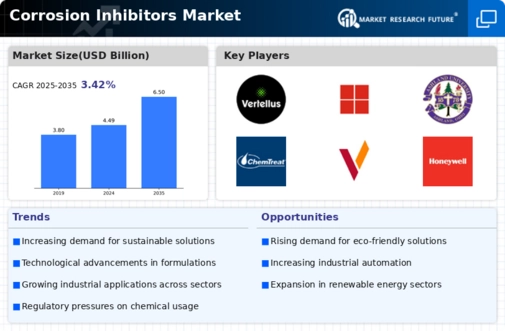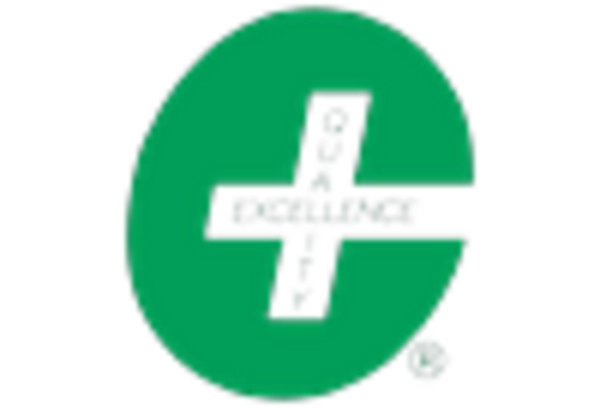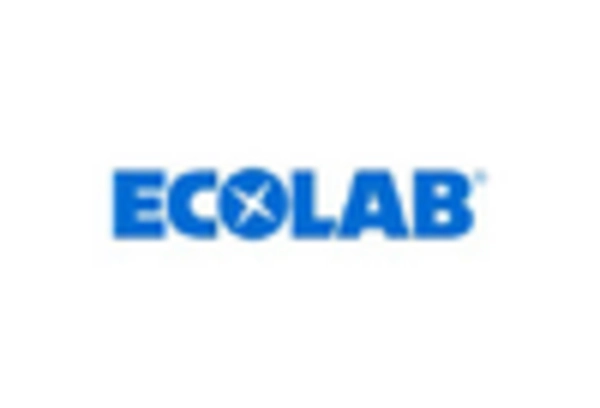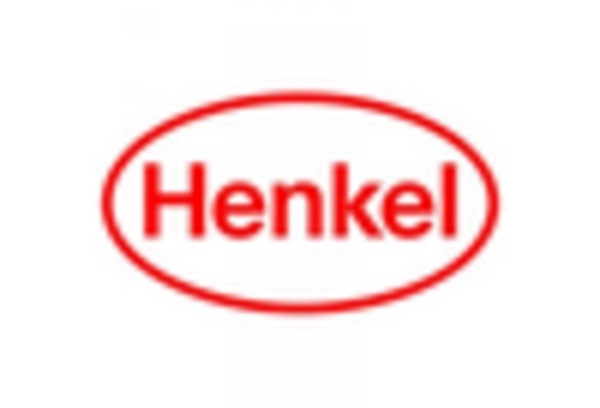Expansion of the Automotive Sector
The automotive industry is experiencing a resurgence, which is likely to bolster the Corrosion Inhibitors Market. As vehicle manufacturers strive to enhance the durability and lifespan of their products, the demand for effective corrosion protection solutions is on the rise. Corrosion inhibitors play a crucial role in protecting automotive components from rust and degradation, particularly in regions with harsh weather conditions. Recent data indicates that the automotive sector contributes significantly to the overall demand for corrosion inhibitors, accounting for approximately 25% of the market share. This trend suggests a promising outlook for the Corrosion Inhibitors Market, as manufacturers continue to innovate and develop specialized products tailored to the automotive sector.
Increasing Infrastructure Development
The ongoing expansion of infrastructure projects across various sectors, including transportation, energy, and construction, appears to be a primary driver for the Corrosion Inhibitors Market. As nations invest heavily in building and upgrading their infrastructure, the demand for effective corrosion protection solutions intensifies. For instance, the construction of bridges, highways, and pipelines necessitates the use of corrosion inhibitors to enhance the longevity and durability of materials. The market for corrosion inhibitors is projected to grow at a compound annual growth rate of approximately 5.5% over the next few years, driven by this infrastructure boom. Consequently, manufacturers are likely to innovate and develop advanced formulations to meet the specific needs of these projects, thereby propelling the Corrosion Inhibitors Market forward.
Technological Innovations in Coatings
Technological advancements in coating technologies are significantly impacting the Corrosion Inhibitors Market. Innovations such as nanotechnology and smart coatings are enhancing the performance of corrosion inhibitors, providing better protection and longer-lasting results. These advanced coatings can adapt to environmental changes, offering superior resistance to corrosion. The integration of technology in corrosion protection is expected to attract investments and drive market growth. As industries increasingly adopt these cutting-edge solutions, the Corrosion Inhibitors Market is poised for expansion, with manufacturers focusing on research and development to create more effective and efficient products.
Rising Demand from the Oil and Gas Sector
The oil and gas industry is a significant consumer of corrosion inhibitors, which are essential for protecting pipelines, storage tanks, and offshore platforms from corrosive environments. The Corrosion Inhibitors Market is likely to benefit from the increasing exploration and production activities in both onshore and offshore oil fields. As companies strive to enhance operational efficiency and reduce maintenance costs, the adoption of advanced corrosion protection solutions becomes imperative. Recent estimates suggest that the oil and gas sector accounts for nearly 30% of the total demand for corrosion inhibitors. This trend indicates a robust growth trajectory for the Corrosion Inhibitors Market, as companies seek to mitigate the risks associated with corrosion-related failures.
Growing Awareness of Environmental Regulations
The heightened awareness of environmental regulations and sustainability practices is influencing the Corrosion Inhibitors Market. Governments and regulatory bodies are increasingly mandating the use of eco-friendly corrosion inhibitors to minimize environmental impact. This shift towards sustainable solutions is prompting manufacturers to develop innovative, non-toxic formulations that comply with stringent regulations. The market is witnessing a transition from traditional, harmful inhibitors to greener alternatives, which is expected to drive growth. As a result, the Corrosion Inhibitors Market is likely to see a surge in demand for products that not only protect materials but also align with environmental standards, thereby appealing to a broader customer base.

















Leave a Comment